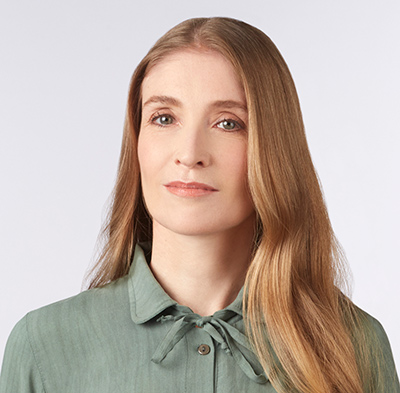If you think of a memory as something neatly stored away in your brain, like an old wedding dress that you can unpack, admire, and carefully fold away again, neuroscientist Daniela Schiller has news for you.
Your memories change every time you recall them.
GUEST LECTURE
Daniela Schiller will present “Forgetting Fear,” part of the Humanities Center’s Public Lecture Series—this year on the theme of memory and forgetting—on April 12 at 5 p.m. in the Hawkins-Carlson Room at Rush Rhees Library.
“When we remember something, we reconstruct it,” she says. “It’s not like taking a picture. We have to build the memory. And the more we retrieve it, the more it’s getting involved in our present life. It gets modified.”
And those changes aren’t a failure of memory, either. They’re what remembering is actually for, says Schiller, who’ll be delivering a Humanities Center public lecture on April 12.
“It’s not really about documenting the past,” she says. “It’s more about enabling us to understand the present and make predictions for the future.”
The malleability of memory may alarm judges and juries, but for people with traumatic memories, it represents opportunity—because neuroscience may be able to help them remove painful emotions from harrowing memories. Recollection of the event would be left, but without the agonizing feelings.
“Memory is a state of the brain that we can negotiate,” says Schiller, who leads the Schiller Lab for Affective Neuroscience at the Icahn School of Medicine at Mount Sinai. Her work has promise for people with post-traumatic stress disorder, anxiety, addiction, and phobias.
While the research is still in an early phase, scientists have a growing understanding of the basic mechanisms involved in disconnecting emotion from memory. “I think we’re just in the process of making it clinically relevant. That’s the next major goal,” Schiller says.

The laboratory protocols she and her team use involve straightforward classical conditioning, the association between a cue and something negative or positive. “But in real life—say in combat—you have many, many cues,” she says. “Sounds, smells, visions. It’s a complex picture, an event that unfolds over time. Sometimes it’s a repeated event. And it’s intense.”
Taming a person’s traumatic memories is complicated. But the simple models are allowing allow researchers to isolate the fundamental components of memory, with the goal of developing drugs and behaviors that can help to remove fear and other debilitating emotions from memories.
“I think what we gain is freedom,” she says. Memories can be positive and healthy. “But negative memories can keep you in chains. And you think that, because it happened in the past, there’s no way to change it.”
Many processes already used in therapy involve reshaping, negotiating, and reconstructing memory. But neuroscience is showing that memory is actually designed to foster just such reinvention.
“I think what we can get from science is that it’s not just a therapeutic approach that could be effective,” says Schiller. “It’s actually the way memory is. And just like when we become better aware of any mechanism in the brain, we can probably use it better, more adaptively, and wisely.”




